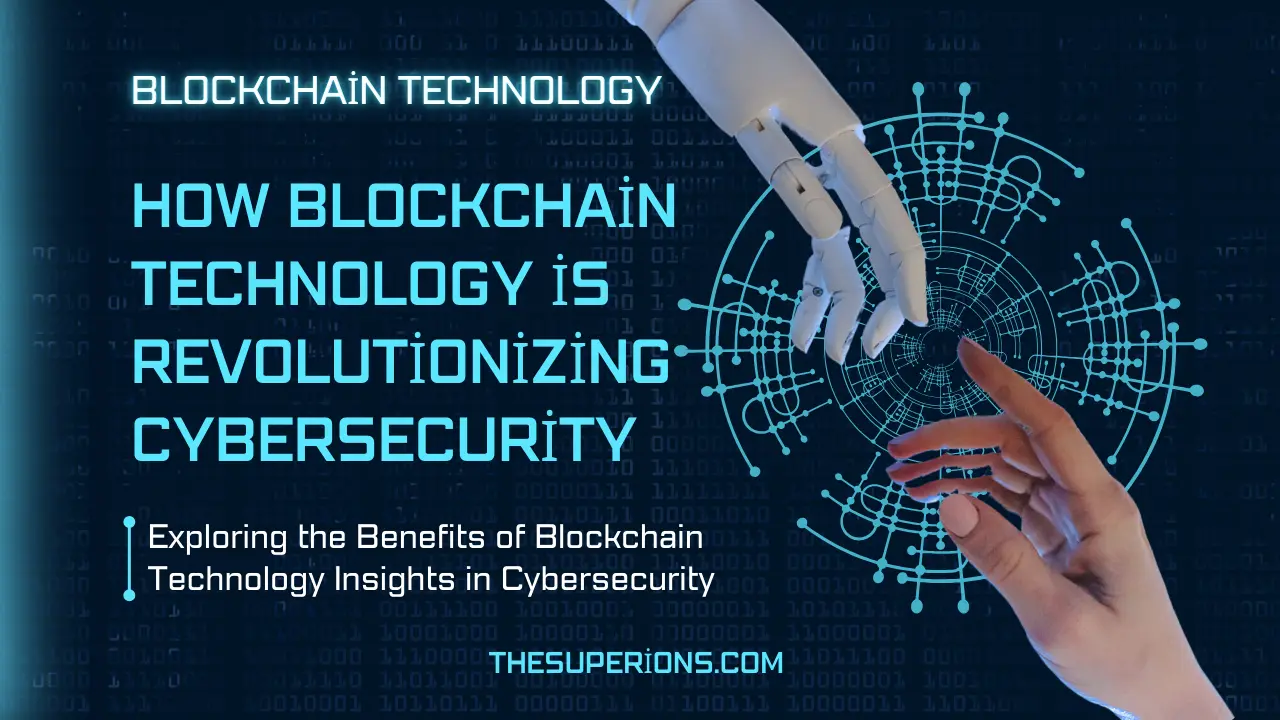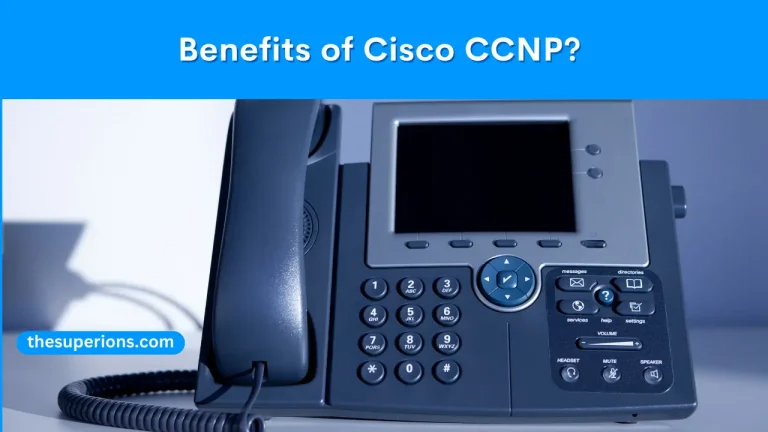How Blockchain Technology is Revolutionizing Cybersecurity
Did you know alterations or deletions of data on a blockchain without network consensus are nearly impossible? This trait is changing cybersecurity by ensuring data remains unchanged. In our digital world, where threats are common, blockchain’s role is essential. It uses cryptographic hashes, linking each data block to the last one. This method keeps our digital data safe and makes checking records easy.

Blockchain reduces the risk of data troubles like breaches or tampering. By not having a central point, it lessens the chance of attacks. It makes sure that data stays genuine and unaltered, stopping hackers from changing information unnoticed. This protection is critical for businesses that depend on digital info to stay efficient and safe from cyber dangers. For companies seeking to leverage blockchain for enhanced security, IT Support Los Angeles can provide the necessary guidance and support to implement this technology effectively.
Blockchain uses cryptographic hashes and decentralized networks for better digital data security. It can check where data came from and if it’s real using digital signatures. Only people allowed can add or change information. This clear and unchanged record builds trust and responsibility in many fields, improving cybersecurity efforts.
Key Takeaways
- Blockchain technology employs cryptographic hashes for strong data checks.
- Each data block in a blockchain is cryptographically linked to its predecessor, creating an unbreakable chain.
- Changes or deletions of data on a blockchain without agreement are nearly impossible.
- Blockchain’s no central model lowers risks like data breaches, tampering, and unauthorized access.
- The unchangeable nature of blockchain keeps data true and safe, lowering manipulation risks.
- Blockchain makes record-checking simpler by providing a record that can’t be changed.
- Being clear in blockchain adds trust and accountability across many fields.
People Also Read?
Introduction to Blockchain Technology and Its Impact on Cybersecurity
Blockchain technology is changing cybersecurity in a big way. It uses a network and codes to protect data. Teams are spending a lot to make sure their online spaces are safe. With the advent of blockchain, we see new, strong answers to today’s cyber risks. Its role in cybersecurity frameworks is growing.

Blockchain acts like a never-changing record book, filled with secure codes. Every deal is checked by many computers and can’t be changed. This makes it tough for hackers to attack since there’s no single weak spot. About 6 billion secret files were stolen recently, and most device communications are not safe. That’s why using blockchain to keep cyber threats away is critical now.
Blockchain brings top-notch security to digital spaces. Its codes and shared control stop unwanted entry and confirm data solidly. For example, a huge cyber attack in 2016 shut down parts of the internet. Blockchain fights such threats with its key codes and shared checks. A 2019 study showed a third of people think blockchain is key for cyber safety. So, folks are moving from old ways to new tech like blockchain for safety.
Understanding Blockchain Basics: How Blockchain Works and Its Key Benefits
Blockchain technology changed the game since its first description in 1991. It started with Bitcoin’s launch in January 2009. To understand its benefits, knowing about blockchain functionality is crucial.
Blockchain is essentially a distributed ledger. It records every transaction across many computers. Each transaction becomes a “block” and joins a chain in order.
The data verification uses a consensus mechanism. This makes sure all users agree on each transaction’s validity.
Once a block joins the chain, changing previous blocks becomes almost impossible. For example, from April to June 2024, over 32 million ETH was staked on the Ethereum blockchain. It was done by more than a million validators, all verified securely.
Blockchain boosts information security and keeps data accurate. Its decentralized setup cuts the risk of data breaches. Cryptographic hashes highlight any data tampering.
For instance, the Bitcoin network’s power was between 566-657 exahashes per second from May to June 2024. This power deters attacks and keeps transactions safe.
This technology’s openness means anyone can check transaction data. Companies using blockchain can avoid fraud, enhance security, and trust their networks more.
To wrap up, understanding blockchain functionality and its consensus mechanism is key. It’s how we fully use blockchain for information security and accurate data.
People Also Read?
How Internal Developer Platforms Streamline Development Processes
Ensuring Data Authenticity and Integrity with Blockchain Technology
Blockchain technology is a strong defense against data tampering. It keeps data real and safe in different areas. By spreading out data storage and removing a single failure point, blockchain keeps records accurate and safe. This helps protect against cyber threats and fraud.
Blockchain’s setup stops data from being wrongly changed. Each block in the blockchain has a special cryptographic hash, transaction data, and a time stamp. It’s nearly impossible to change info without being caught. This makes digital records trusted and verifiable by everyone in the network.
The transparent and secure nature of blockchain means data, once added, stays true. This keeps info integrity intact.
“Blockchain enables end-to-end traceability and transparency in supply chains, ensuring the integrity of product information and preventing counterfeiting.”
The unchangeable feature of blockchain is key in stopping data manipulation. Blockchain’s strength in keeping data integrity gets a boost by spreading it across many places. This gets rid of single failure points and lowers the chance of data tampering.
Blockchain technology has many uses across different fields. IBM’s Food Trust blockchain network makes the food supply chain very transparent, from farm to table. This improves food safety and lowers fraud. Another example is MedRec, which allows safe sharing of medical information. It protects patient privacy while keeping data accurate.
In finance, blockchain creates secure and clear financial transactions. This cuts down on fraud and makes financial data more trustworthy. Microsoft’s ION project, on the Bitcoin blockchain, offers a decentralized identity system. It gives users more security and control over their personal info. These examples show how blockchain keeps trusted digital records. They make audits better and help follow rules.
Blockchain also allows smart contracts, like those on Ethereum’s platform, to work securely. This is used in finance and real estate to automate transactions safely. It makes sure agreements are kept and stops unauthorized changes. This keeps data honest.
There are challenges like scalability and complexity with blockchain. Still, its ability to keep data real and secure is huge. As blockchain grows in different industries, we can expect better cybersecurity and data management. This is thanks to blockchain’s solid and secure nature.
Decentralized Security: Benefits of Blockchain’s Decentralized Approach
Blockchain technology boosts cyber resilience and data security through decentralization. By spreading control to many nodes, it avoids the weaknesses of centralized systems. Blockchains like Bitcoin and Ethereum share network security responsibilities across the globe. This makes them stronger against cyberattacks.
Decentralization removes the risk of a single failure point. Public blockchains have open-source codes that many developers check. This improves security and openness. With methods like Proof-of-Work and Proof-of-Stake, they validate transactions and lower fraud risks. Blockchain transactions also use private keys for extra security, making hacking tough.
This approach boosts defenses against cyber threats. By spreading out the validation work, blockchains handle security better than centralized systems. This advantage is vital as cyber threats keep evolving, demonstrated by significant breaches in various sectors.
Examples of Decentralized Security Applications
In industries like managed IT services Los Angeles, businesses use blockchain for better security. These systems protect data and keep operations running smoothly, even during cyberattacks.
The financial sector greatly benefits from decentralized security. With blockchain, there’s been a major decrease in illegal transactions. A notable 65% drop in such activities was reported in 2023. This highlights blockchain’s role in creating safer financial systems.
Blockchain is also making waves in the Internet of Things (IoT) for its secure, decentralized nature. It prevents data breaches and tampering in IoT networks. This assures the safety and integrity of connected devices.
In summary, blockchain’s decentralized model brings major cybersecurity improvements. It enhances resilience against cyberattacks and secures transactions across industries. Blockchain is changing how we protect data and maintain integrity in the digital age.
People Also Read?
Enhancing Security with Smart Contracts: Real-World Applications and Examples
Smart contracts are changing how we handle cybersecurity, thanks to blockchain technology. These digital contracts run themselves on the blockchain, making transactions secure without middlemen. This makes our digital world both safer and more efficient.
Smart contracts automatically carry out a contract’s terms once conditions are met. This means less human mistake and smoother transactions. With blockchain, every deal is recorded in a way that can’t be changed, improving trust and openness.
Smart contracts bring many security perks. They let terms change as users wish, within legal limits. Dynamic consent management and automation of encryption key management cut down data breach risks. This adds a strong security layer.
Various industries see how smart contracts make their cybersecurity stronger. For example, IBM and Maersk’s platform, TradeLens, fights fraud with instant tracking and goods checking. Cisco is using blockchain to keep IoT devices safe, making device activities permanent records.
In healthcare, smart contracts secure patient records and control who sees them. This protects data and fits tight rules. By linking with IT, they help find threats faster, making systems tougher against attacks.
Finance and insurance also benefit from smart contracts for safer, automatic payments and faster claim handling. These cases show how blockchain’s smart contracts are big for cybersecurity across fields.
Blockchain in Identity Management: Securing Digital Identities and Authentication
The world now has 7 billion internet-connected devices. This number will jump to 22 billion by 2025. With this growth, we urgently need stronger identity management solutions. Around 1.1 billion people globally can’t prove their identity. Sadly, 45% of these people are among the world’s poorest. Blockchain offers a promising solution to these issues.
Blockchain technology gives us tools to create better identity management systems. It uses decentralized identities secured by private keys that only the owner knows. This way, people can control their data without relying on central authorities. It also lowers the risks found in old identity verification methods.
Decentralized identifiers (DIDs) let people use different identifiers for parts of their lives. With this, users can show their identities safely and privately using things like QR codes. This makes accessing services more secure.
Blockchain improves secure authentication with encrypted identity checks. This is very important because personal data is often stolen in data breaches. In 2018, 97% of breaches targeted personal information. That year, 2.8 billion consumer data records were lost, costing about $654 billion.
Blockchain gives users secure IDs, control over their data, and safer data storage. This makes the internet better for everyone. Fields like finance, healthcare, and government will see faster checks, secure data, and easier data handling.
Blockchain plays a key role in protecting digital identities and making authentication safer. It tackles many issues of old systems. As the world plans to spend $1.6 billion on data services for laws and identity checks in 2022, using blockchain is not just good. It’s necessary.
People Also Read?
Addressing Challenges and Limitations of Blockchain in Cybersecurity
Blockchain technology is becoming more popular across many industries. But, it faces several big challenges, especially in cybersecurity. With more cyberattacks happening, it’s important to solve these problems. This will help us use blockchain to its fullest.
One big issue with blockchain is blockchain scalability. When transactions increase, the network can slow down. This leads to longer processing times. It’s a bigger problem in large uses, slowing widespread adoption.
Another challenge is that different blockchain systems can’t easily work together or share data. This makes it hard to use blockchain technology together across industries. It causes fragmented systems that are hard to integrate.
Also, there’s a big need for strong regulatory frameworks. Blockchain is used worldwide and across many industries. So, having clear rules is key to prevent misuse and build trust. Without these rules, there are risks of legal issues and non-compliance.
Blockchain has tight security, but it’s not perfect against all cybersecurity risks. The future threat of quantum computing could break its security methods. We need to start planning for this now.
Solutions and Future Developments to Overcome These Challenges
To solve these issues, we need constant innovation and strategic planning. Improving blockchain scalability with methods like sharding and layer-2 protocols is crucial. These can help handle more transactions efficiently, encouraging wider use.
For interoperability, there are new solutions on the horizon. Cross-chain bridges and standardized protocols could connect different blockchain systems. This would allow for easier data sharing and better collaboration.
Creating effective regulatory frameworks is also essential. Working together, policymakers, industry leaders, and blockchain experts can establish global rules. This will help make blockchain applications secure and compliant. Addressing legal uncertainties will build trust and encourage more people to adopt blockchain.
Improving cybersecurity is a continuous process. By combining blockchain with existing cybersecurity methods, we can create stronger defenses. Exploring new, quantum-resistant security methods will also help us stay ahead of future threats.
In conclusion, although blockchain has its challenges, focusing on technological improvement, regulatory agreement, and cybersecurity can help us overcome them. By tackling these issues head-on, blockchain can transform cybersecurity and many other areas. This promises a safer, more secure digital future for everyone.
Conclusion: The Future of Blockchain in Revolutionizing Cybersecurity
Blockchain technology is a big deal in cybersecurity. It makes sure data stays real and unchanged because of its structure. The system is open, letting everyone see the transactions. This builds trust and makes communication clear.
Blockchain changes cybersecurity in finance, healthcare, and more. It uses special algorithms to keep data safe and real. It also makes supply chains secure by making every step clear and easy to follow. This stops fake products and makes sure everything is genuine. Sharing secret threat data helps groups work together in real time.
People Also Read?
Everything You Need to Know About Windows 12 Pro Product Keys
Blockchain will be key in keeping digital assets safe. We must solve issues like scaling and making different systems work together. But, the advantages are big. It offers a new way to manage identity and keep records safe, and uses smart contracts for better security. As more fields use blockchain, it will be crucial in fighting cyber threats, changing cybersecurity forever.





